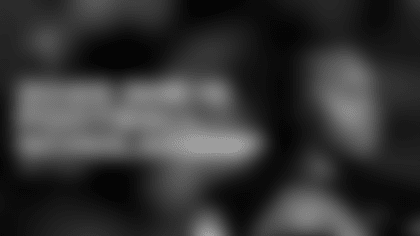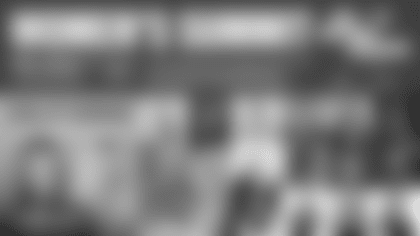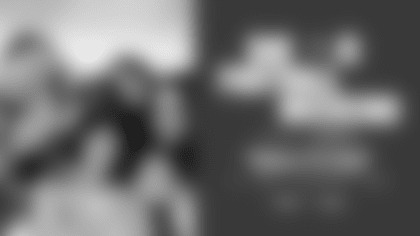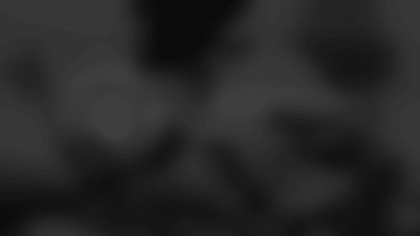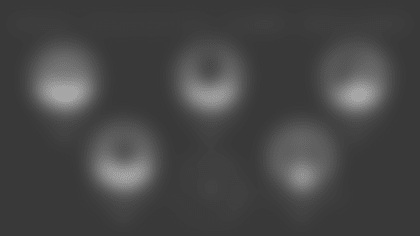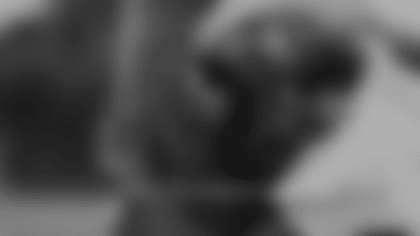Previously, we took a look at the most common NFL penalties, and the hefty 15-yard personal fouls often called on Sundays.
In our second installment of Chalk Talk Penalties Edition, we take a look at the flags that fly on the defense before the ball is even snapped, in addition to a few miscellaneous penalties. Let's get right to it.
- *
Defensive Offside, Encroachment, Neutral Zone Infraction
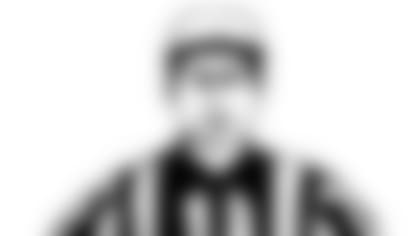
Frequency (combined)
: 308 times in 2014, 18.1 times per week
What They're Worth: Five-yard penalty and replay of down.*
What They Are:
Defensive Offside: Occurs when the ball is snapped and a defender is already past the line of scrimmage.
Encroachment: When a defender touches and offensive player before the ball is snapped.
Neutral Zone Infraction: Similar to both, this occurs when a defender moves beyond the line of scrimmage before the ball is snapped and caused an offensive player to move early.
Defensive 12 Men on the Field

Frequency: 31 times in 2014, 1.8 times per week.
What It's Worth: Five-yard penalty and replay of down.*
What It Is: When the defense has 12 or more players anywhere in the field of play at the snap of the ball.
The offensive equivalent would be having 12 or more men in the huddle or in an offensive formation, also resulting in a five-yard penalty.
*If the whistle is not blown (and the play ended) when an offside penalty takes place, or if the defense has 12 men on field at the snap, it is called a "free play" for the offense. Even if the offense throws an interception and the defense scores, that play will be called back and nullified because of the penalty.
For this reason, when a quarterback sees a defender go offside or sees them with 12 men on the field after the ball is snapped, he will likely try for a big play as there is no risk. If they complete a long pass, they can decline the penalty and take the yardage they gained on the play. If the pass calls incomplete or is a negative play, they can accept the penalty and be awarded five yards.*
*
Delay of Game

Frequency: 140 times in 2014, 8.2 times per week.
What It's Worth: Five-yard penalty
What It Is: Any action that delays the next play. Most often, this is when the offense fails to snap the ball before the play clock reaches zero. At the end of a non-touchdown play, if an offensive player spikes the ball, this can also be considered delay of game.
On defense, if a player hinders the offense from hurrying to make the next snap, they can be penalized. On special teams, if a returner runs with the ball after signaling for a fair catch, delay of game can be called.
Offensive Pass Interference

Frequency: 102 times last season, 6 times per week.
What It's Worth: 10-yard penalty
What It Is:Any intentional physical contact between the time the ball is snapped to the time the ball is first touched. If a receiver tries to block a defender away from a passed ball, they will be flagged for offensive pass interference.
Illegal Formation (offensive)

Frequency: 41 times in 2014, 2.4 times per week.
What It's Worth: Five-yard penalty
What It Is: In order for an offensive formation to be legal it must have: seven or more players on the line of scrimmage; eligible receivers on both ends of the line and all players on the line between them must be ineligible (if the last person on either end of the line is an offensive lineman, they must "report" or a penalty will be called); no players may be out of bounds. If any of these requirements are not met, a flag will be thrown.
Intentional Grounding

Frequency: 30 times in 2014, 1.8 times per week.
What It's Worth: Either a 10-yard penalty or spot of the foul, whichever is farther from the original line of scrimmage. It is also a loss of down. If the penalty occurs in the end zone, the play results in a safety.
What It Is: Often when a quarterback is being pressured, he will simply throw the ball away to avoid a sack. This is legal only if the quarterback is outside of the pocket (the distance from one offensive tackle to the other at the snap of the ball) AND if the ball makes it past the line of scrimmage.
If the quarterback is inside the pocket and an incomplete pass is thrown with no receiver in the vicinity, it is intentional grounding. If the quarterback throws a pass outside of the pocket but it does not reach the line of scrimmage and there is no receiver in the vicinity, it is intentional grounding.
Illegal Use of Hands

Frequency: 164 times in 2014, 9.6 times per week.
What It's Worth: If committed by the offense, 10-yard penalty. If committed by the defense, 5-yard penalty and automatic first down.
What It Is: One of the most self-explanatory penalties in a referee's arsenal, this is when any player illegally uses their hands to block a player, ward off a block, cover a receiver or tackle a ball carrier. On offense this can be hands to the face while blocking, pushing an opponent from behind or assisting the runner. On defense, this is most often thrusting hands forward into an opponents neck, face or head.
Illegal Block in the Back

Frequency: 115 times in 2014, 6.8 times per week.
What It's Worth: 10-yard penalty
What It Is: Another non-head-scratcher, this is when a blocker contacts a non-ball-carrying member of the opposing team from behind and above the waist.
(Contacting them below the waist from behind results in a clipping penalty which is a 15-yard penalty.)



